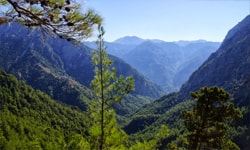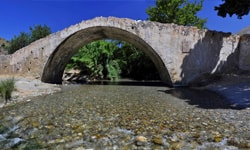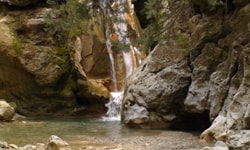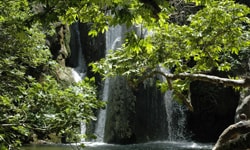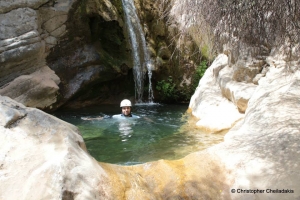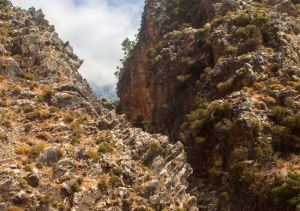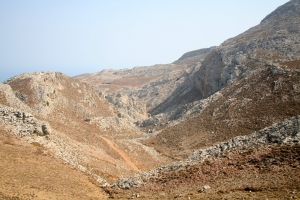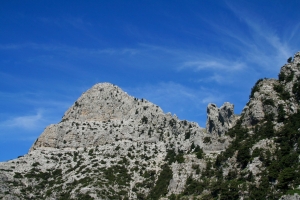Just a few meters to the west of Tsoutsouros, the very narrow and smaller gorge of Troulla is formed. Being shorter than the Tsoutsouros canyon, it has attracted the attention of the canyoners and is very impressive with more than 15 beautiful waterfalls along its bed, the largest being 15m high.
The gorge of Psaro Nero is located 55km southeast of Heraklion. It is a short inaccessible canyon with high waterfalls (rapels), very well known to canyoners of Crete. Psaro Nero with its wonderful rock formations has water till late spring. It is initially open and closes abruptly close to the end, where the high rappels are (the highest is 25m). The gorge empties into Baritis River, a tributary of Anapodaris, near Katofygi.
Gorge Mavrogiannis starts its course from the village Skinias (Mirabello) and ends after a serpentine route at the beautiful beach Avlaki in Vlychadia location. It is a dry canyon with awesome rock formations along it.
At the small and almost deserted village Chordaki, district of Amari, we meet the small but very beautiful canyon of Kynigospilios south of the village. It is a secret place, not visible from anywhere and this is the main reason that remains it unknown. The canyon Kynigospilios has enough water flow during the winter months till the end of spring, which comes from the slopes of Mount Kedros.
The small gorge called Havgas starts near the Minoan settlement of Azorias and ends its course in Kavousi, being only 700m long. Crossing it through its stream requires technical (canyoning) equipment as there are six beautiful waterfalls, which the highest is 20 meters high and has water till late winter.
Ligiofarago is one of the few canyons of East Asterousia range that one can walk down to the sea without needing technical equipment. Recently the path has been signed, connecting Achendrias to Maridaki, running through the gorge.
The unknown gorge of Kouroukoulos starts from the deserted village Agalianos at the province of Merambelo, Lasithi prefecture. West of Kouroukoulos, there is the Gorge Patsopoulos.






